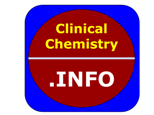Clin Chem Lab Med. 2025 Oct 23. doi: 10.1515/cclm-2025-0984. Online ahead of print.
ABSTRACT
OBJECTIVES: This study aims to determine reliable reference intervals (RIs) for total cortisol (TC) in adults considering the effects of both age and blood collection time, using indirect methods and machine learning approaches.
METHODS: Serum TC results from blood samples collected between 08:00 and 10:00 am at the first outpatient visit were included in the study. Serum TC were measured using a Roche Elecsys Cortisol II kit. Estimated RIs by indirect methods with the support of R packages (refineR and reflimR) for the implementation of machine learning algorithms (mclust and rpart) were compared with the manufacturer’s reference interval (RI) (48-195 μg/L).
RESULTS: Estimated RIs by refineR and reflimR (57-256 μg/L and 62-271 μg/L, respectively) were wider than the manufacturer’s RI. When reflimR was applied to Box-Cox-transformed data with the lambda value of 0.284 suggested by refineR, an RI of 57-251 μg/L was obtained, which was like that obtained with refineR. An even better match with the manufacturer’s RI was achieved using Gaussian mixture modelling with the mclust, which suggested one out of four clusters with an RI of 55.8-187 μg/L. Clustering the data with rpart suggested stratification into two age groups (≤35 and >35 years) and three blood collection periods (08:00-08:45, 08:45-09:35, and 09:35-10:00). The TC levels demonstrated the highest concentrations in the early morning (8:00-08:45) and in young adults (18-35 years).
CONCLUSIONS: This study highlights the necessity of considering both age and blood collection time in clinical interpretation and demonstrates the effectiveness of indirect methods and machine learning approaches in the verification of RIs for hormones with known heterogeneity.
PMID:41118607 | DOI:10.1515/cclm-2025-0984
